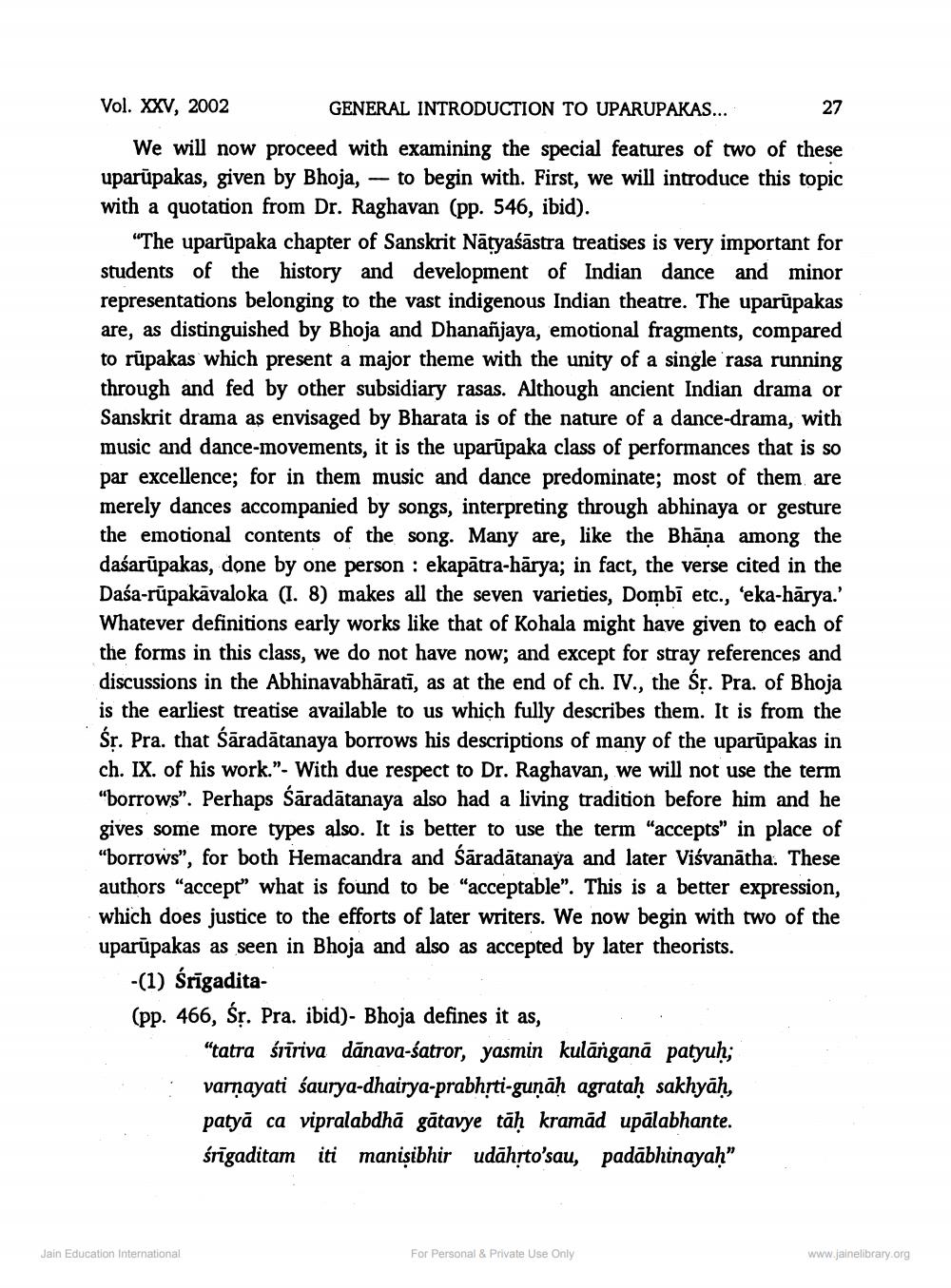________________
Vol. XXV, 2002
GENERAL INTRODUCTION TO UPARUPAKAS...
We will now proceed with examining the special features of two of these uparūpakas, given by Bhoja, - to begin with. First, we will introduce this topic with a quotation from Dr. Raghavan (pp. 546, ibid).
"The uparupaka chapter of Sanskrit Natyaśāstra treatises is very important for students of the history and development of Indian dance and minor representations belonging to the vast indigenous Indian theatre. The uparūpakas are, as distinguished by Bhoja and Dhananjaya, emotional fragments, compared to rūpakas which present a major theme with the unity of a single rasa running through and fed by other subsidiary rasas. Although ancient Indian drama or Sanskrit drama as envisaged by Bharata is of the nature of a dance-drama, with music and dance-movements, it is the uparūpaka class of performances that is so par excellence; for in them music and dance predominate; most of them are merely dances accompanied by songs, interpreting through abhinaya or gesture the emotional contents of the song. Many are, like the Bhāna among the dasarūpakas, done by one person: ekapātra-hārya; in fact, the verse cited in the Daśa-rūpakāvaloka (I. 8) makes all the seven varieties, Dombī etc., 'eka-hārya.' Whatever definitions early works like that of Kohala might have given to each of the forms in this class, we do not have now; and except for stray references and discussions in the Abhinavabhāratī, as at the end of ch. IV., the Śr. Pra. of Bhoja is the earliest treatise available to us which fully describes them. It is from the Śr. Pra. that Saradātanaya borrows his descriptions of many of the uparupakas in ch. IX. of his work."- With due respect to Dr. Raghavan, we will not use the term "borrows". Perhaps Śāradātanaya also had a living tradition before him and he gives some more types also. It is better to use the term "accepts" in place of "borrows", for both Hemacandra and Saradātanaya and later Viśvanatha. These authors "accept" what is found to be "acceptable". This is a better expression, which does justice to the efforts of later writers. We now begin with two of the uparūpakas as seen in Bhoja and also as accepted by later theorists.
-(1) Śrīgadita
(pp. 466, Śr. Pra. ibid)- Bhoja defines it as,
Jain Education International
"tatra śrīriva danava-śatror, yasmin kulānganā patyuh; varṇayati śaurya-dhairya-prabhṛti-guṇāḥ agrataḥ sakhyāḥ, patya ca vipralabdhā gātavye tāḥ kramād upālabhante. śrīgaditam iti manişibhir udahṛto'sau, padabhinayaḥ"
27
For Personal & Private Use Only
www.jainelibrary.org




